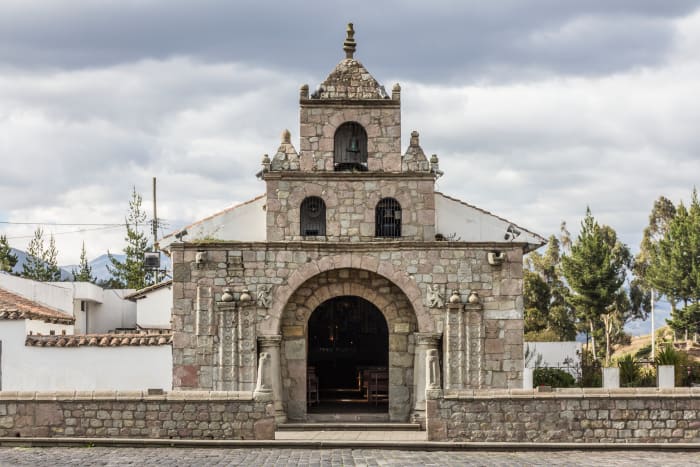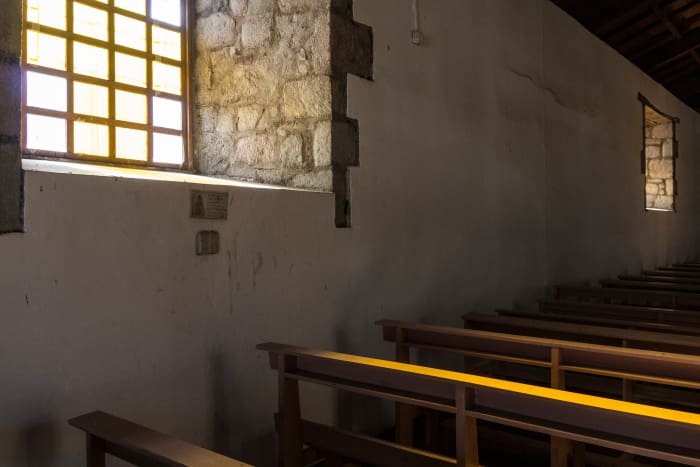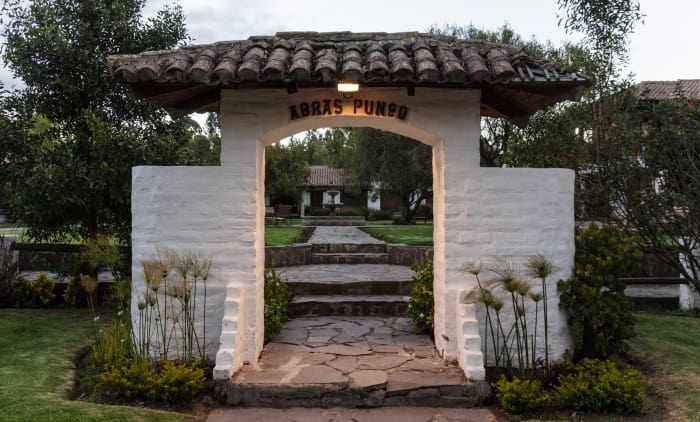Visiting Ecuador's Oldest Church Colta, Ecuador
After our morning adventures in Alausí, and riding the Devil’s Nose train to Sibambe, we were headed towards Riobamba for the night. Our driver pulled off the highway at a roadside convenience store to give us a 10 minute break. Rather than a conventional parking lot, there was a huge open space in front of the store paved with cobblestones.
It felt like we were in the middle of nowhere (although that's likely because we weren't paying attention and nothing remarkable jumped out).
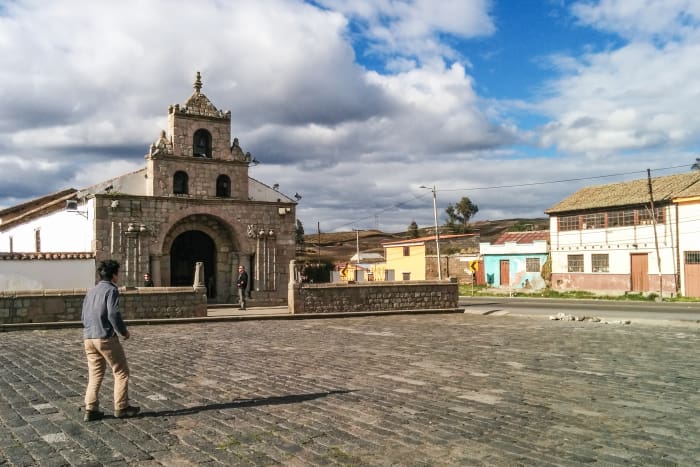
On one side of the 'parking lot' sat an old church with a large stone block facade. This seemed a little out of place and the front door was open, so I decided to take a look while others were getting snacks in the store.
A sign on the side of the church indicated where we were, and the significance of the building. We were in Colta, home of the first Catholic church in Ecuador. The church—Maria Natividad de Balbanera—was founded in 1534.
Inside, an information panel provided a brief history of the church. Roughly translated (thank you Google Translate), it reads:
The oldest catholic church of Ecuador founded on August 15, 1534, built by the Spaniards, its style of construction is colonial, its facade is made of stone and a faithful witness of its history and where the Blessed Virgin Mary is venerated Natividad de Balbanera.
The church has as background the fantastic snow of Chimborazo (which means God of snow, Lord of the Mountains). The church also has an altar and an atrium. The baptismal font made of stone in its facade highlights a double arch that supports an original wooden door. The floor is brick with unique design, its facade made of white stone calcarea. In its interior it conserves that simplicity and recollection of the temples built at that time, an environment conducive to reflection.
Built on the banks of the Colta lagoon, it has a plaza with a stone floor, where processions and other events take place. It is part of an architectural complex with one- and two-storey houses that give a special feature to this area.
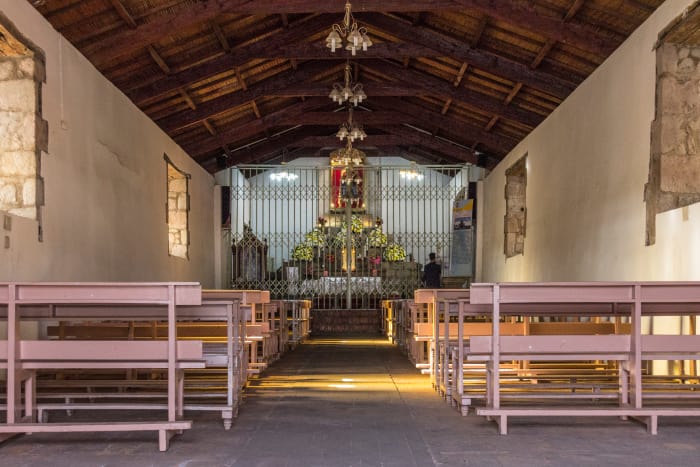
The church interior is fairly typical: rows of pews on either side of a central aisle. The primary source of light is through the translucent windows punched into the very thick block walls. This illuminates the interior in a soft way, although it's still fairly dim and moody. At the far end is the altar and a nativity scene, both behind a large metal gate (which I assume is opened during services).
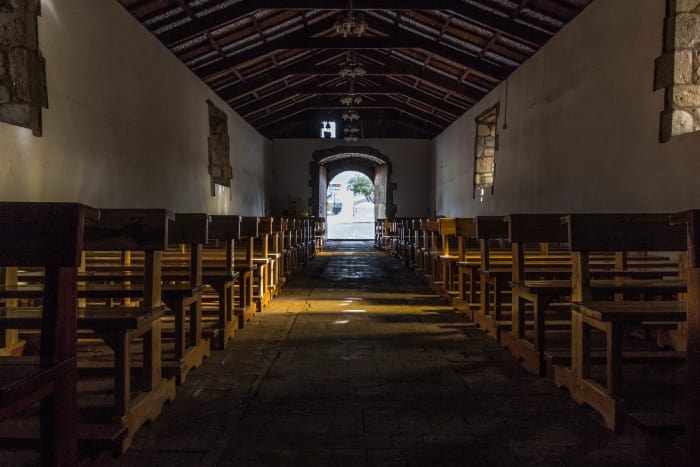
The interior walls have a white-washed surface which, combined with the exposed wood frame ceiling, makes for a minimalist and simple design.
Across the road: street-meat
Along the street, opposite the church and large parking lot, were a number of brightly painted buildings. Blue, green and yellow pastel walls lined the road, similar to what we saw in Alausí.
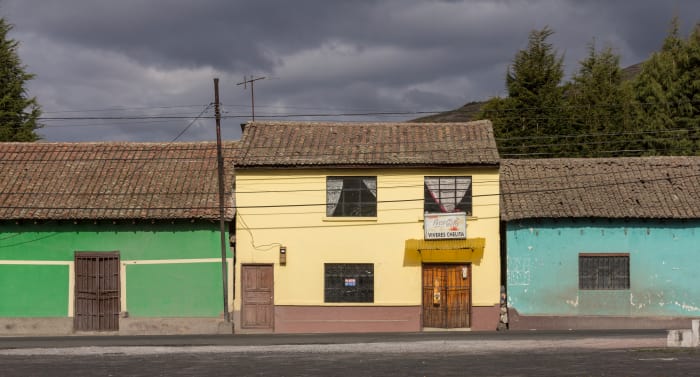
If you looked a little further down the street, there were a few people outside one of the buildings with what looked like portable rotisserie station.
From where I was, I couldn’t really tell what it was they were cooking or selling. I was able to use my Sigma 18-250 mm telephoto lens to zoom in to see what it was. The result surprised me.
Rotisserie guinea pigs.
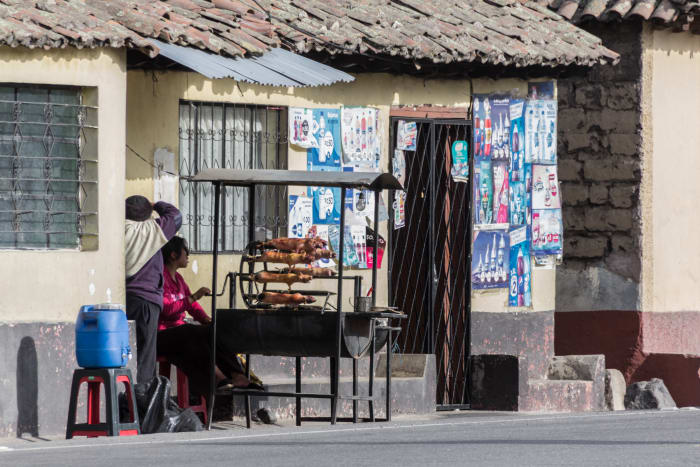
A few days earlier, the girls at the Gulahuayco school gave us a guinea pig as a gift thanking us for our visit and support. Obviously we couldn’t return on the plane carrying a guinea pig so we handed it back, and somemade made a comment to the effect of “promise not to eat it!”
I thought that was a half-hearted joke, but after visiting a farm where they raised guinea pigs for food I understood that yes, this was a reality.
But seeing them on a spit on the side of the road? That made the idea a whole lot clearer.
Apparently it’s a traditional food (known as cuy in Quichua), and something of a delicacy. I’m not even close to adventurous when it comes to food so I took a hard pass on trying this.
